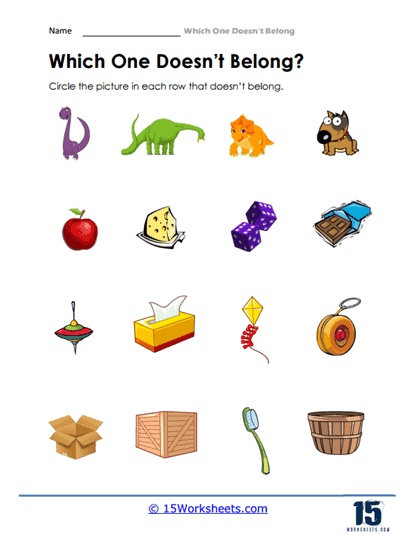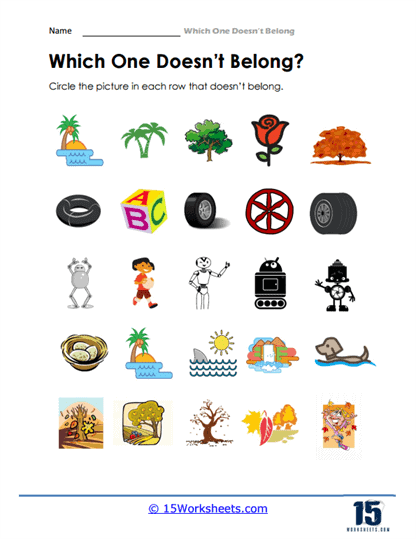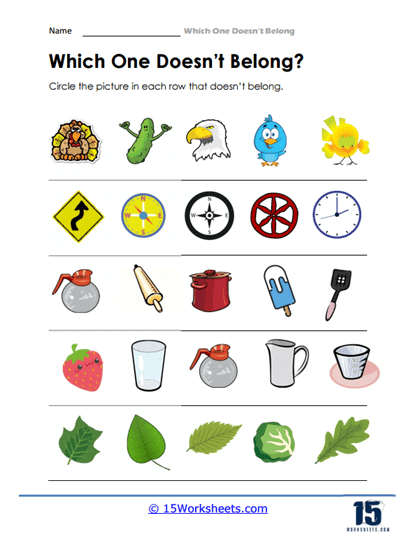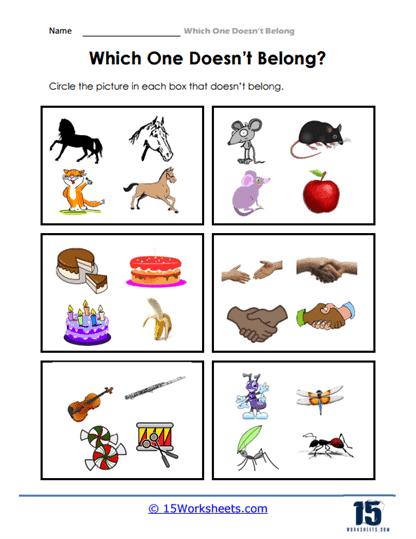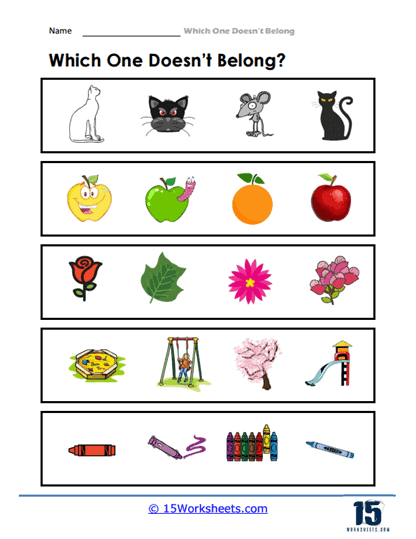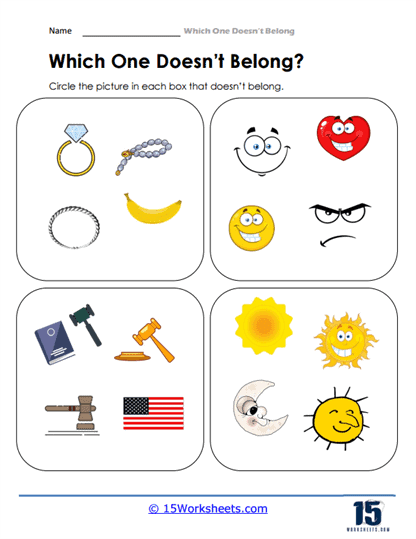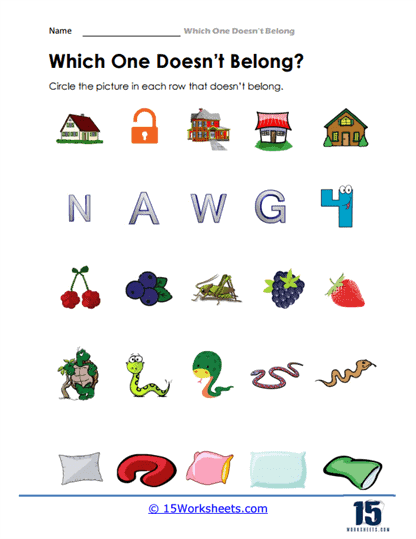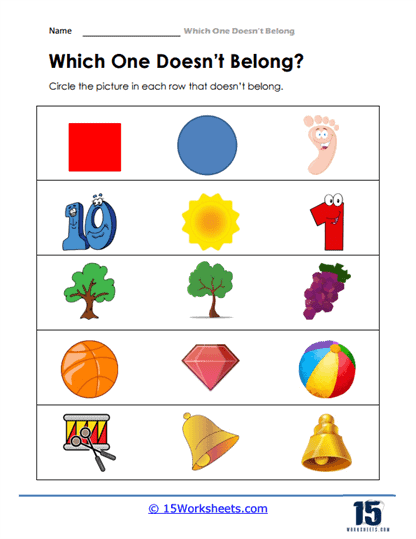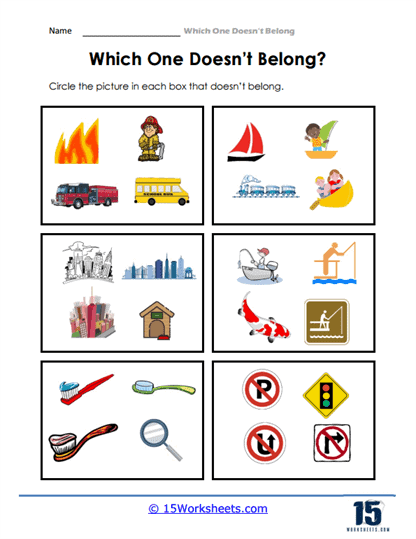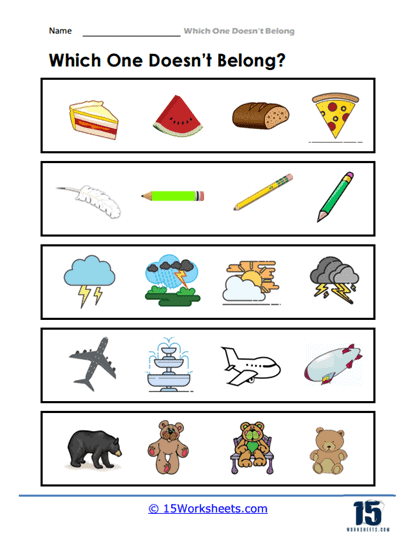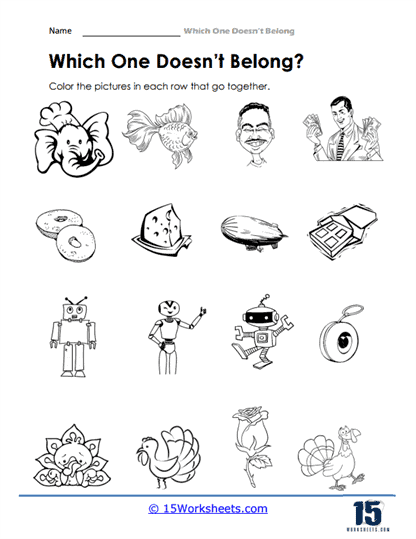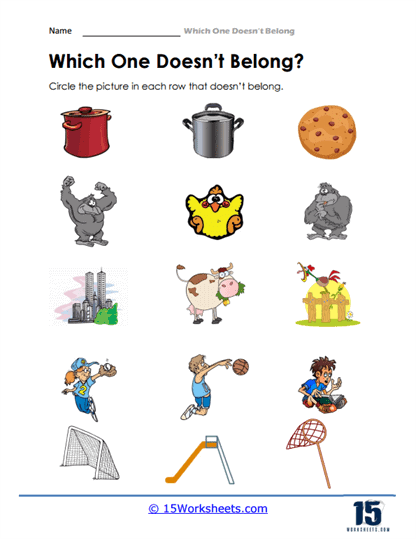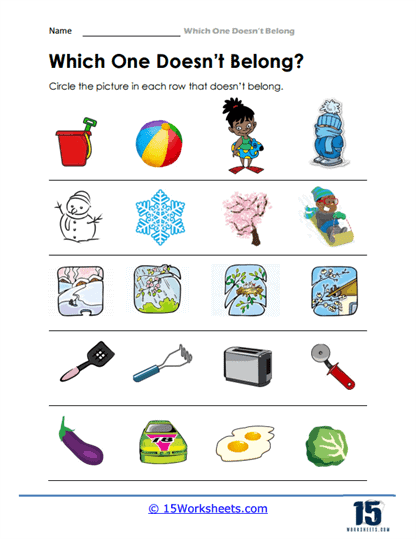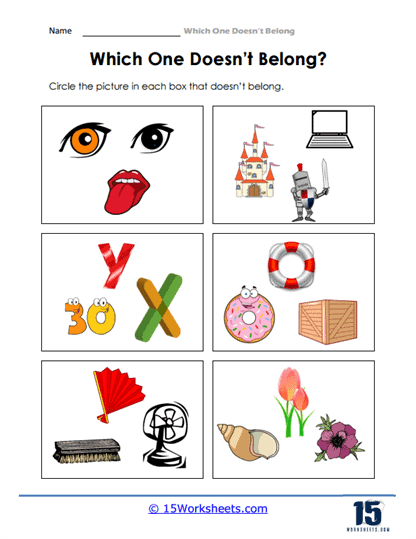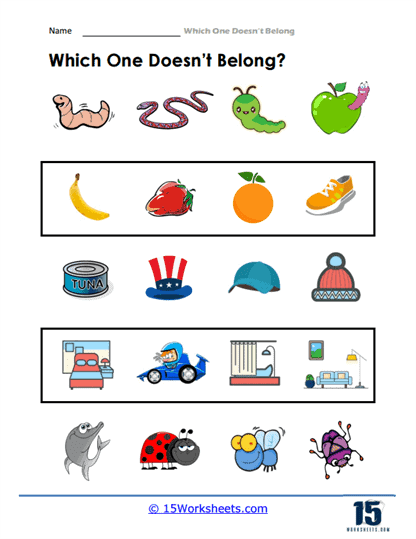Doesn't Belong Worksheets
All About These 15 Worksheets
Young learners hone their visual discrimination and critical thinking skills with this series of Doesn’t Belong worksheets. This collection is designed to develop young students’ ability to identify differences, make comparisons, and enhance their critical thinking skills. Through a variety of interactive exercises, students will engage in activities that involve identifying the picture that doesn’t belong in a set and coloring the pictures that do belong together.
These worksheets foster visual perception, logical reasoning, and categorization abilities. By participating in these exercises, students will develop a deeper understanding of similarities and differences, strengthen their cognitive skills, and cultivate their ability to make informed decisions based on visual cues. Through these worksheets, students will:
- Reinforce and strengthen their visual perception and categorization skills;
- Develop their critical thinking and observational skills;
- And improve their speed in determining the similarities between pictures in the same set to figure out which one is different from the rest.
Through this engaging series of Kindergarten worksheets focused on identifying differences and similarities, young learners will develop essential critical thinking and visual discrimination skills. By participating in activities that involve identifying the picture that doesn’t belong in a set and coloring the pictures that do belong together, students will strengthen their ability to analyze visual cues, make comparisons, and categorize objects based on specific criteria.
These worksheets provide opportunities for hands-on exploration, observational skills, and logical reasoning. By engaging with these exercises, students will develop a foundation for visual perception, problem-solving, and decision-making abilities. Ultimately, this collection serves as a stepping stone for developing cognitive skills and lays the groundwork for future explorations in categorization and visual analysis.
What Are Doesn’t Belong Worksheets?
Doesn’t belong worksheets were created to help children develop their ability to identify patterns and groups of objects, and to recognize which objects do not belong in a given set. These worksheets feature a series of objects or pictures, and children are asked to identify which one does not belong in the group and explain why.
Doesn’t belong worksheets can come in many different forms, such as fill-in-the-blank exercises, matching games, and puzzles. Some worksheets might ask children to circle the object that does not belong in a given set, while others might ask them to draw a line between the objects that belong together and the one that does not.
Doesn’t belong worksheets are a popular tool used by teachers, parents, and caregivers to help young children develop critical thinking and problem-solving skills. They can be used in the classroom, at home, or during other educational activities to help children build their ability to identify patterns and groups, and to develop their reasoning skills by explaining why certain objects do not belong in a given set.
How to Determine What Doesn’t Belong In a Group
Determining what doesn’t belong in a group is a valuable skill that helps develop critical thinking, observation, and classification abilities. Here are some strategies for identifying the item that doesn’t belong in a group:
Identify the Common Attribute – Examine the group of items and try to identify the common attribute or characteristic shared by most of the items. This could be color, shape, size, function, category, or pattern.
Look for Differences – After identifying the common attribute, look for the item that stands out due to a difference in one or more of these characteristics. This item is likely the one that doesn’t belong in the group.
Analyze Relationships – Consider the relationships among the items in the group, such as the sequence or pattern they follow. The item that doesn’t fit the pattern or disrupts the sequence may not belong in the group.
Apply Logic and Reasoning – Use your logic and reasoning skills to determine which item doesn’t belong in the group based on your observations and understanding of the relationships among the items.
Consider Multiple Solutions – In some cases, there may be more than one possible solution, depending on the attributes or characteristics considered. Be open to multiple interpretations and try to justify each one based on the evidence.
Practice with Various Examples – Enhance your ability to determine what doesn’t belong in a group by practicing with a variety of examples, such as images, numbers, shapes, or words. This will help you become more adept at recognizing patterns and identifying differences.
Use Puzzles and Games – Engage in puzzles and games that challenge you to identify items that don’t belong in a group. These activities can be an enjoyable way to practice and develop your skills.
Discuss with Others – Share your observations and reasoning with others to gain new perspectives and insights. This can help you refine your critical thinking and problem-solving skills.
By applying these strategies, you can effectively determine what doesn’t belong in a group and develop your critical thinking, observation, and classification abilities.

